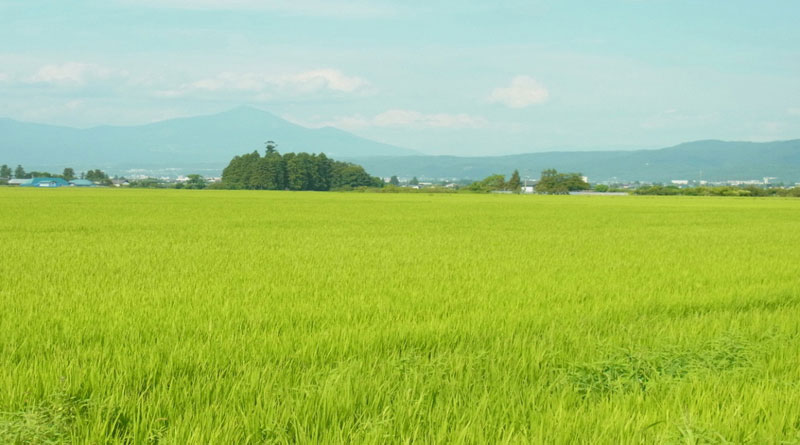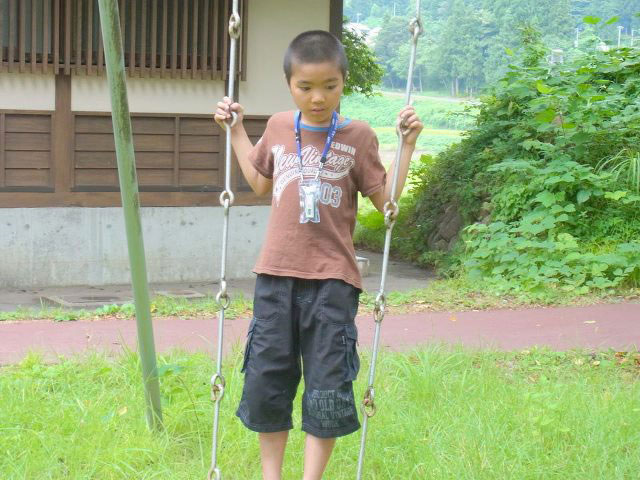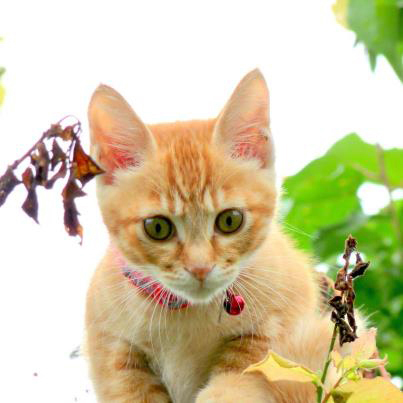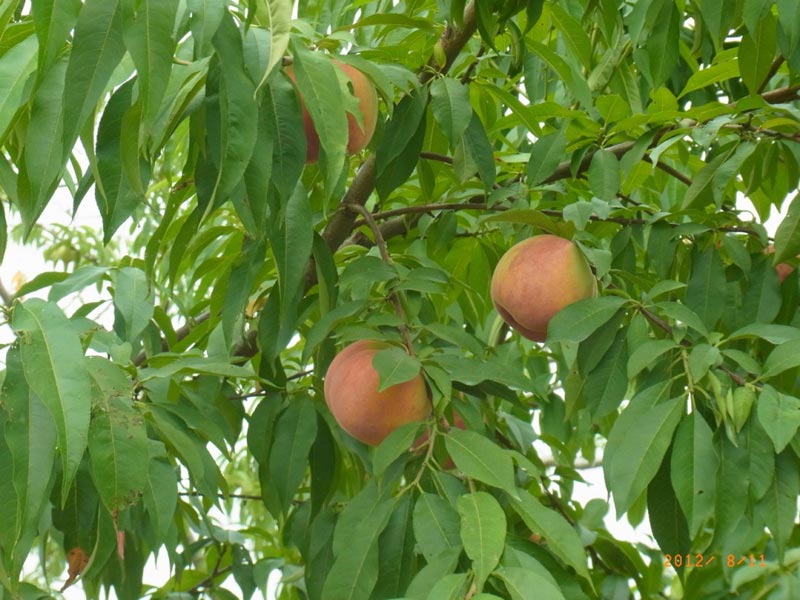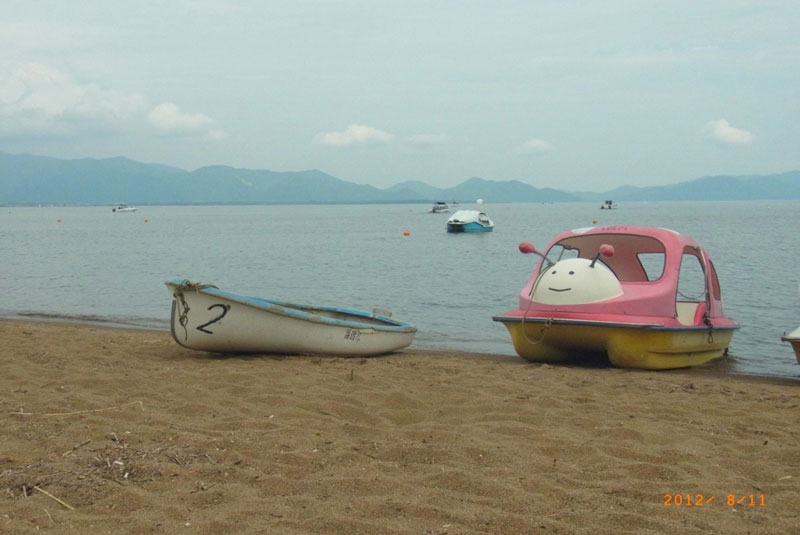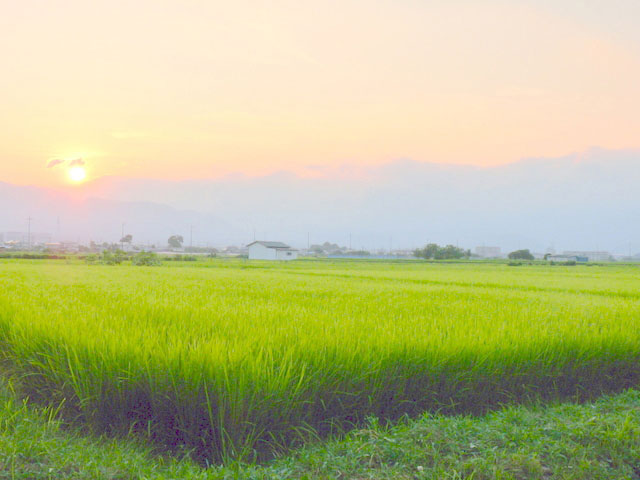
Our hometown, Fukushima
1
Most Japanese people return to their hometowns and pray for their ancestors before their tombs every summer. The Buddhist tradition is called “Obon” in Japanese. Following the tradition, I went back to my hometown, Fukushima, to pray for my late parents last summer. But this time in 2011, I hesitated to return due to the contamination causes by the nuclear leak at Fukushima Atomic Power Plant on March 11, 2011. The wind has spread cesium from the plant all across the prefecture. It is said to be a cause of cancer for children and babies in the future. After hesitating for a few days, I decided to go back there in spite of this, for I believed I was too old to contract cancer from the fall-out.
O went there by express bus in August. When I got off, the fields spread out before me as far as the eye could see.I can’t believe
They have been contaminated
By cesium winds,
Standing before the green, green,
Brilliant rice fields.
2
I stayed at my brother’s house and took a walk with nephews the next day. One of them said, “Oh, I’ve forgotten to take a dosimeter with me”. He immediately went back home and brought it back with him. Children in Fukushima always hang dosimeters around their necks whenever they go out so that their teachers can check their radiation levels later. We walked to park by a river. But there were no other children playing there except my nephews. Maybe the other were home playing computer games or watching TV to avoid the cesium wind, for teachers at schools advised them to stay at home and play indoors as much as possible.
Dosimeters
Hanging from their necks
Even when the children
Play tag with me
In the green park.
3
One afternoon it began to rain suddenly. Our cat dashed into my brother’s house from the rain and sat under the eaves.
The cat
Ignorant
As it licks
Cesium rain
From its wet fur.
Not only cats but larks, trout, lilies, rice, all the living in Fukushima, were being contaminated by the cesium rain.
4
All residents living near the Plant fled away after the leak. In particular, some young parents with children or babies sought safe shelter very far away from the area. But most of the residents far from the plant remained in Fukushima prefecture.
Even though
Some residents want to flee,
They can’t move anywhere,
Having no jobs, no houses
Except in Fukushima.
5
But some old farmers near the plant did not wish to seek refuge elsewhere, whether they wealthy or not. They neither wanted to learn new dialects, new customs nor leave their neighbors and friends. They remained to live out their last years.
Though official say
“Flee from your village!”
Old farmer refuse
As they want to stay calmly
In their hometown, Fukushima.
But the old farmers
Like trees
Have thick roots
Deep in the earth
Of Fukushima.
Through Fukushima,
The old farmers
Want to return
To their true hometown:
The Earth itself.
The Earth is
A dark womb
Where they revive
In the future:
Their next stages.
6
One night when we watched a soccer game on TV together in living room, I ate the pink peach. Though very delicious, a trace of cesium has just entered my body. I can’t see cesium, not hear it, not feel it, it’s an invisible enemy. However, honestly speaking, I don’t know whether the trace of cesium is my enemy or not. Some experts say that it may be good for the health as long as it’s just a trace. Other say it is very dangerous. I don’t know which is true. Strictly speaking, even experts don’t know the truth. In the future, we’ll be able to see what effect cesium will have, good or bad. But I want to know now whether or not I will contract cancer. Nevertheless, I can’t know my future now. God knows it. But if he doesn’t exist, no one can know it in the vast universe.
A trace of cesium
Exists silently
Without any smell
Without any taste
In my dark cells.
7
At late night, I talked of the radioactive contamination with my brother. What he told about a dairy farmer was a great shock to me. I examined the details by reading lots of articles about him in some magazines. The summary was as follows:
A dairy farmer lived in a small village near the Fukushima Plant with his Philippine wife and two sons. His family was happy as he kept about 40 cows and worked very hard with his wife together every day. He built a new workshop to earn more money because his sons were still young. He prepared a new satchel for his elder son and expected that the entrance ceremony at the elementary school would be held in April when the cherry blossoms were in full bloom around the school ground.
But the Fukushima Plant exploded after a huge tsunami on March 11. The wind from the plant spread the cesium all over the fields, mountains and houses of his village. The cesium stuck all the grass of his village without being seen, being heard and being smelled. The milk from his cows contained lots of cesium because he fed them grass which he had moved there every morning. He had to throw out all the milk contaminated by the cesium every day.
Because of concern for the health of his sons, he made his family evacuate the village and go to Philippines in the middle of April. It was before the entrance ceremony at the elementary school. As a result, the explosion of the plant prevented him from participating at the ceremony.
The farmer remained by himself and kept working in the village for a while. Though he worked very hard, the level of the cesium was high. At last he gave up milking the cows and joined his family in The Philippines in late April.
However, he was able to understand neither English nor the Philippine language: Tagalog. So he could not get a job there and returned to Japan alone in May. But he had neither cows nor his family in the village. He was like a tree without roots.
The dairy farmer left his message
On a wallboard of his new workshop,
“If the Plant hadn’t exploded,
I wouldn’t have killed myself”.
Then he was 54 years old.
8
One day I went sightseeing to a famous tourist attraction by a large lake with my brother’s family, but there were few visitors due to concerns about cesium contamination, though it used to be crowded in the past with many children on summer vacation. The blue surface of the lake was as brilliant as that of a usual summer. The breeze from the lake was very cool. Their voices of the inhabitants were very calm. Almost everything looked the same as in any other summer. But there were no children swimming in the lake or screaming on the beach.
Give it back,
Give it back,
Our former Fukushima
Where children once played
Outside with their parents.
9
After the explosions, many parents and public servants began to clean cesium from the ground of all preschools, primary schools, and high schools in Fukushima. The residents cleaned their houses, gardens and roads. Farmers swept away the cesium from their rice paddies, fields and forests. Lots of inhabitants tried to clean all of Fukushima very hard.
Earth and wind,
Pears and peaches,
Cats and humans,
May all beings
Revive in Fukushima.
10
I make a habit of visiting Miharu near the nuclear plant to see the beautiful cherry blossom every spring. The famous tree there is about 1,000 years old. It’s not a regular tree but a large, tall cherry. The residents call it “Takizakura”. “Taki” means waterfall and “zakura” means cherry blossoms in Japanese. The blossoms look like pink waterfalls cascading from the azure sky, streaming gently in the warm breezes of spring. The blooms are not only gorgeous but look fresh against the blue sky. Looking up at them, my friends and I snack on Japanese cakes, and beer, then take a nap a few hours. This was my custom every spring.
But I didn’t visit Miharu this year. I was very worried about the cesium there. The explosion at the Fukushima plant last March stopped me from going there in April. However, I will go there again. I’ll return to Miharu next April to be revitalized by the cherry blossoms. I’ll have my yearly date with Takizakura as usual. To be sure, the nuclear disaster problems have not be solved yet. It may take dozens or hundreds of years to solve them completely. But Takizakura will be living a healthy life with the residents as a symbol of restoration during this long span. If we look after it carefully, it will live for 1,000 years. And Takizakura will bloom fresh and gorgeous against the blue sky every spring after the radioactive contamination is solved completely.
We’ll sing a song
And dance again
Around the tall, cascading cherry
In our hometown,
Fukushima, Fukushima.
Text and photo - Taro Aizu
anshin©2011All rights reserved. When using the materials of the site, reference is obligatory.
Proposals for co-operation, as well as comments and suggestions on the site please send to the address: anshin-sad@mail.rutel: +7 (965) 121-80-60, 10am-20pm
